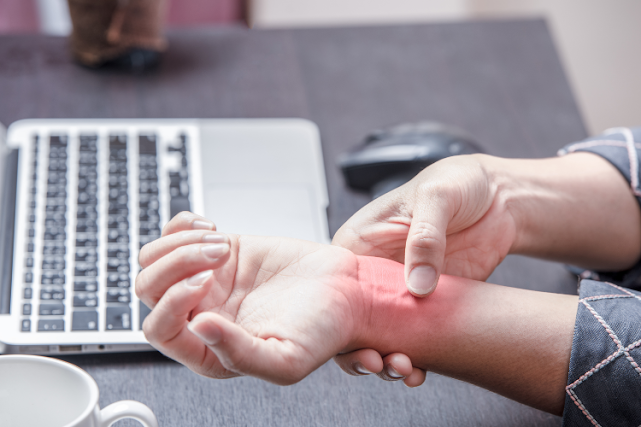Carpal Tunnel Syndrome (CTS) is often associated with the hands and wrists. Tingling fingers, numbness, and wrist pain are telltale signs that something’s off—usually involving the median nerve. Most treatments focus on the wrist and forearm, where the symptoms show up. But what if the real problem starts much higher—at the top of the spine?
It might sound surprising, but some cases of carpal tunnel symptoms may involve more than just local nerve compression. The upper cervical spine—the area at the very top of your neck—could be playing a role in how well the nerves in your arms and hands function.
Let’s look at how the spine, nervous system, and wrist pain might all be connected—and why upper cervical chiropractic care is worth exploring for those dealing with CTS.
Understanding Carpal Tunnel Syndrome
Carpal Tunnel Syndrome happens when the median nerve, which runs from the neck down into the hand, becomes compressed or irritated. This usually occurs in the wrist, where the nerve passes through a narrow passageway called the carpal tunnel.
Repetitive motion, poor ergonomics, or inflammation can narrow this tunnel, creating pressure on the nerve and leading to pain, numbness, or weakness.
It’s easy to focus on the wrist because that’s where the discomfort is felt. But the median nerve doesn’t begin there—it starts in the cervical spine and travels down through the arm. So if there’s tension, misalignment, or interference anywhere along that nerve pathway—including the neck—it can influence how the nerve functions all the way to the fingertips.
The Upper Cervical Connection
The upper cervical spine includes the atlas (C1) and axis (C2), the first two vertebrae at the base of the skull. These bones protect the brainstem and play a major role in how the body’s nervous system operates. Misalignments in this region can interfere with nerve communication and posture, and may even affect how the body carries tension through the shoulders, arms, and wrists.
When the upper spine is out of alignment, it can trigger a cascade of compensations. Muscles may tighten in the neck and shoulders, changing arm positioning and increasing stress on the nerves in the lower part of the arm—including the median nerve. Over time, that added stress may contribute to carpal tunnel symptoms.
A Structural Approach to Nerve Health
Upper cervical chiropractic doesn’t treat the wrist directly. Instead, it focuses on correcting misalignments in the upper neck that may be contributing to nerve interference or postural imbalance. By realigning the top of the spine, the goal is to improve overall nervous system function, allowing the body to self-regulate more effectively.
When the nervous system operates without unnecessary tension or interference, it may reduce stress on nerve pathways like the one involved in CTS. Some people find that their hand and wrist symptoms ease up as their posture and nerve flow improve—without needing to focus solely on the wrist itself.
Looking Beyond the Obvious
It’s easy to focus on where symptoms appear. But true healing often requires a step back to see the bigger picture. In the case of carpal tunnel, the pain may be in the hand, but the contributing factors might start much higher—at the neck, shoulders, or even in how the head is positioned over the spine.
This is why some people explore upper cervical chiropractic when other approaches haven’t provided full relief. By starting at the top, the body may regain more balance, and symptoms that once seemed isolated might begin to improve naturally.
A Natural Option for Long-Term Relief
Carpal Tunnel Syndrome is a complex issue, and not every case will trace back to the spine. However, for those who have tried braces, stretches, and wrist-specific treatments with limited success, it may be time to take a structural, whole-body approach.
Supporting spinal alignment—especially in the upper cervical area—can be one more way to create better conditions for healing, nerve function, and long-term comfort.
Medical Disclaimer:
This article is for informational purposes only and is not intended as medical advice. Always consult with a qualified healthcare provider before beginning any new treatment or health regimen.


Comments
Post a Comment